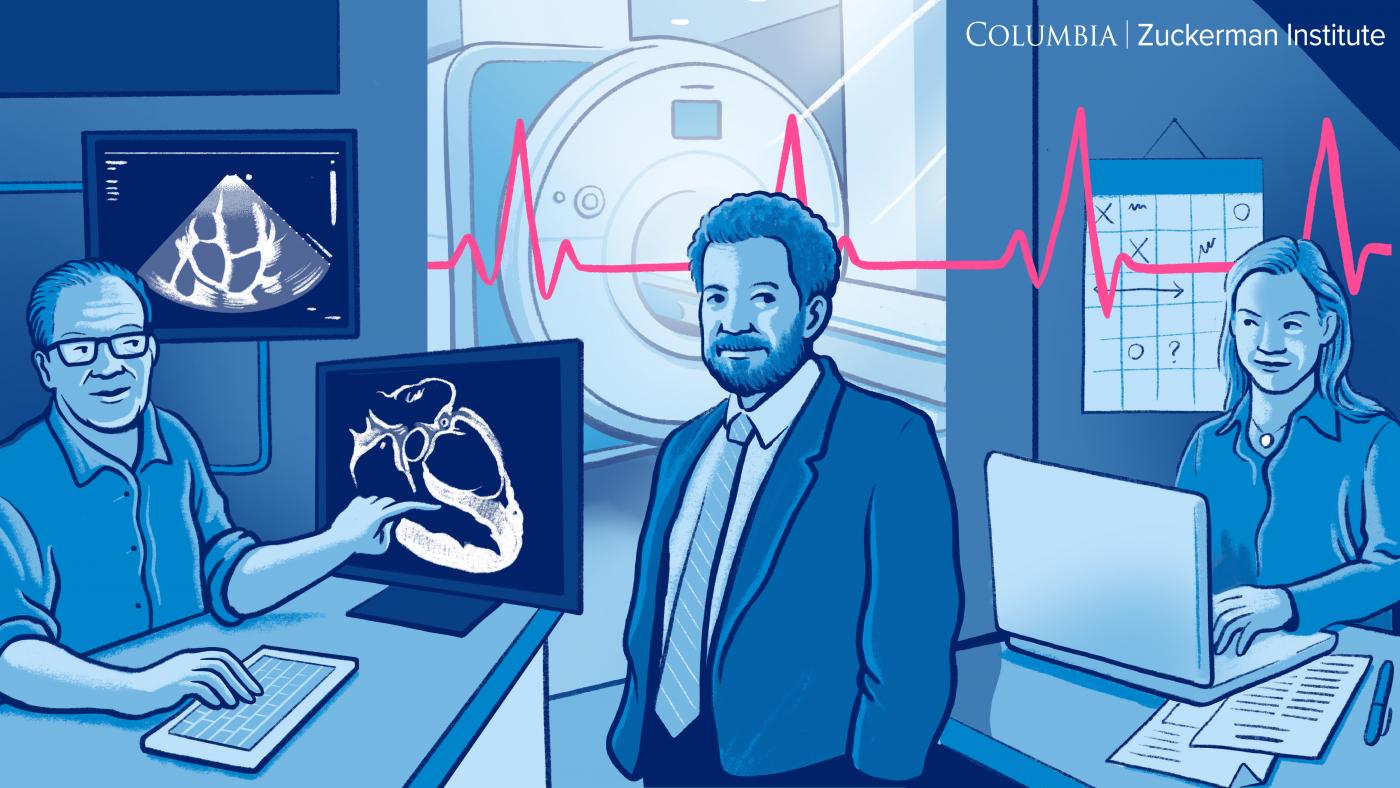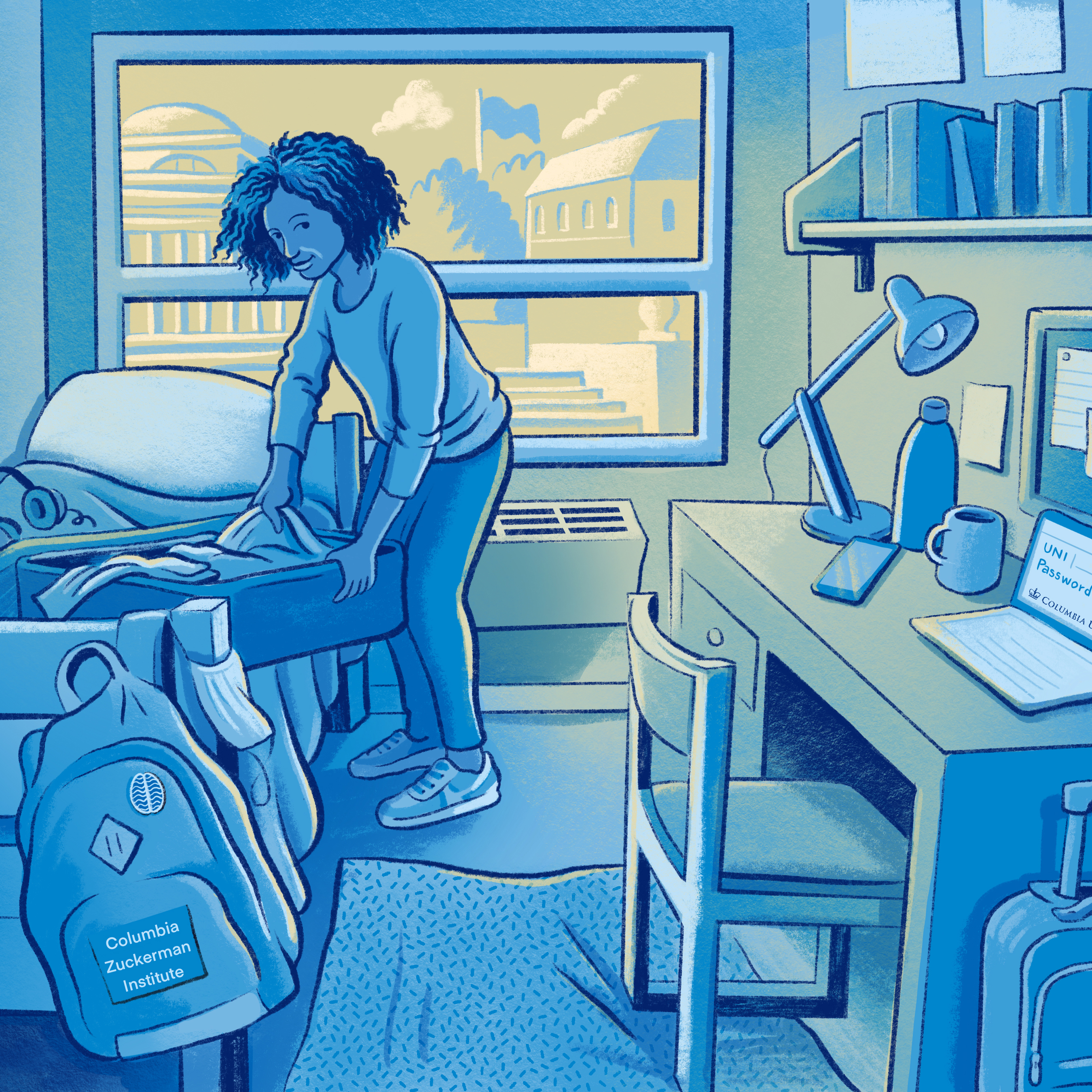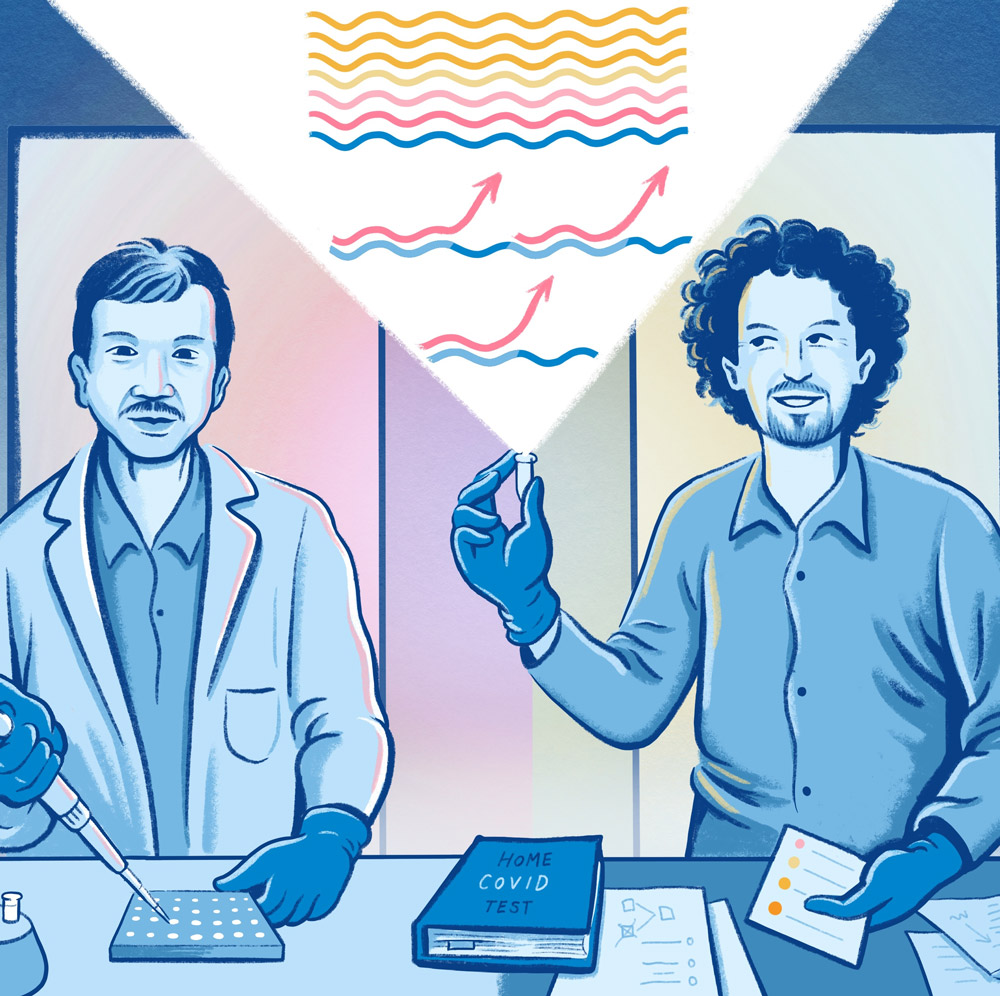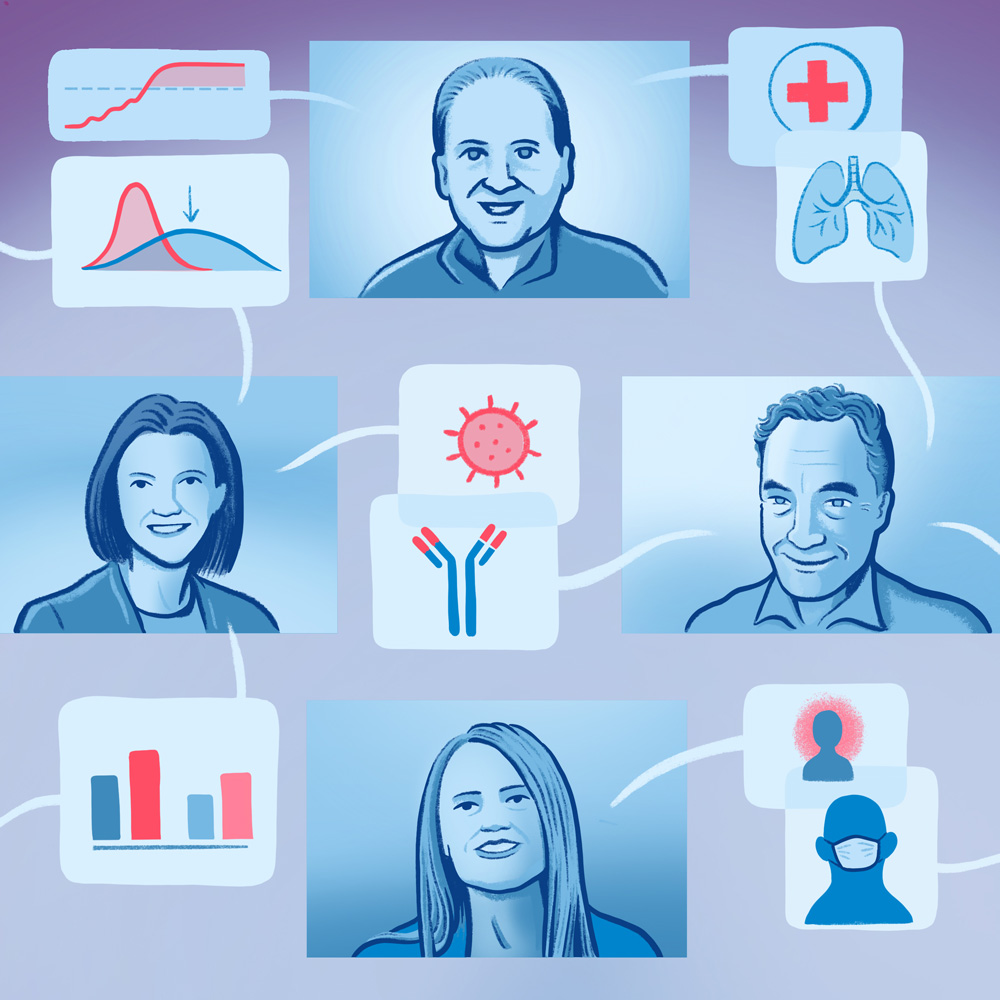KATHLEEN DURKIN I’m Kathleen Durkin of Columbia's Zuckerman Institute.
DEVIN POWELL And I’m Devin Powell of the Zuckerman Institute.
KATHLEEN Welcome to Lab in the Time of Coronavirus, where we explore how scientists are pivoting to tackle COVID-19.
DEVIN So during this pandemic, the medical community has had its hands full just trying to save lives. People have been coming into the emergency room unable to breathe and keeping these people alive long enough for their bodies to fight the virus and recover, that’s been priority number one.
KATHLEEN But the pandemic has worn on, month after month, and now researchers are beginning to recognize the enduring effects of the virus. And there’s no shortage of data. Millions of people have caught the virus and recovered.
DEVIN Now these survivors have been reporting a lot of different health problems. These problems have been persisting after their recovery. Like brain fog, or hypertension, or shortness of breath.
KATHLEN Scientists at Columbia are beginning a new project looking into those problems. To learn more about this project, we talked with Professor Tommy Vaughan, a principal investigator at Columbia’s Zuckerman Institute. He is a faculty member in Radiology and in Biomedical Engineering, and he’s the director of the Columbia Magnetic Resonance Research Center, where he’s part of the Columbia team looking into the long-term damage that COVID can do.
TOMMY VAUGHAN Ok, I’ve had COVID, now what? My heart still hurts. I still have trouble breathing. I have brain fog. I have kidney problems. All of these are symptoms that can result from having had COVID. There’s almost not a tissue or an organ that is beyond being touched by COVID infection.
DEVIN Tommy is specifically interested in how the virus affects the hearts of COVID patients.
TOMMY We’ve read anecdotal accounts of as many as 20 percent or more of recovered COVID patients having heart ailments. We’re talking about hundreds of thousands of people potentially, so we truly need to do the research to answer the question of what’s going on before we can even begin to target therapies. So we’ve started a study to image hearts in recovered COVID patients and in healthy normals for control.
KATHLEEN So who are these recovered COVID patients and healthy controls? Well, one of them might be you! Listeners, get ready for the only advertisement you’ll ever hear on Lab in the Time of Coronavirus. And it’s in this episode because this study is enrolling participants right now. If you live in the New York City area and are interested, you can find the enrollment link in the show notes.
DEVIN You sound like you know a lot about this, Kathleen.
KATHLEEN In fact I do, Devin. Full disclosure: I am helping to coordinate this study. Getting institutional approval, recruiting participants, and then scheduling procedures for those participants. We’re looking to enroll people who contracted COVID, and also people who never had COVID.
DEVIN Talking about COVID damaging our hearts and our other organs, that sounds pretty scary. And the reason that studies like this are taking place is because we don’t really know much yet about how widespread these kinds of damage are. But it’s also important to note that COVID-19 is not unique in its ability to damage the heart.
ANDREW LAINE Any virus can attack the muscle tissue, the myocardium, of the heart.
KATHLEEN That’s Biomedical Engineering Professor Andrew Laine, part of the Columbia team.
ANDREW My mother actually was a victim of this. She caught a virus when she was 15 years old, and it damaged her heart all her life, and she eventually died of heart disease actually, so I’m very familiar with how viruses can lock into the myocardium tissue. And it doesn’t happen overnight. It takes time for this damage to take place. As these patients recover, there will probably be issues that’ll come up in their lifetime. And so I think there’s a great opportunity here to track this disease to minimize its downstream damage.
KATHLEEN And Columbia is a great place to study this. The university is eager to support COVID projects, and there are plenty of New Yorkers who made it through the pandemic and want to participate. Devin, you wouldn’t believe it: in the first 24 hours after we posted the study link online, we had over a hundred people sign up to see if they could enroll. That’s the great thing about New York City: We are surrounded by motivated people who want to do what they can.
TOMMY For a long time Columbia-Presby had more COVID patients than any other hospital on the planet. So have large numbers of people to study, yes, but people that need the benefit of these investigations.
KATHLEEN And the first person in the study was Tommy himself.
TOMMY I’ve been scanned twice. Once at Zuckerman and once up at the Medical Center. I was the first volunteer. I contracted COVID, I remember specifically from whom and when, on a plane on February 14th flying out of LaGuardia. Pretty good case, symptoms of which lasted about six or seven weeks, back when it was officially denied of even being here.
We’re looking for lesions in the myocardium, in the tissue in the heart walls.
DEVIN Early we briefly mentioned how Tommy Vaughan directs the Columbia Magnetic Resonance Research Center, and this is where participants in the study will be scanned.
TOMMY Our MR Research Center is just perfectly poised to help address some of these problems
DEVIN Kathleen, since this is your specialty, why don’t you geek on this for us and tell us what is MR?
KATHLEEN My pleasure. Magnetic resonance uses powerful magnets and radio waves to peer inside the body. With magnetic resonance imaging, or MRI, the researchers can acquire these clear and detailed images of the heart or any almost other organ that might be affected.
TOMMY The MR technique and technology provides a wonderful, to be cliché, one stop shop of a tool to look at living systems. We can look at anatomic structure down to resolutions of tens of microns with the highest field strength magnets. We can look at metabolism. We can both look at the body in health and in disease.
DEVIN So using MRI, the researchers are looking at the heart. Let’s learn more about what, exactly, they’re checking out.
TOMMY We’re looking at heart function broadly. We’re looking at regularity of the heart cycle, how much blood your heart pumps per cycle, and the electrical timing by which your heart beats: not too fast, not too slow, constant. And we’re looking for lesions in the myocardium, in the tissue in the heart walls.
KATHLEEN In addition to the MRI, every participant in the study will also get an ultrasound scan. It’s the same technology obstetricians use to look at a fetus in utero, but when ultrasound is used to look at the heart, it’s called an echocardiogram. The imaging method uses sound to make an image of the heart in motion.
ANDREW If you have infarct on the myocardial surface, which is sort of a chunk of dead tissue that’s sort of being dragged along as the heart is beating you can visualize that and a medical doctor can observe that quite nicely with ultrasound imaging.
DEVIN The researchers will be feeding these echocardiograms and their MRI scans and into an artificial intelligence: specifically a deep learning algorithm.
ANDREW Once we’ve acquired and scanned these patients with both modalities, combining MRI and ultrasound, a deep learning algorithm would tease out and recognize an abnormal condition that neither one might pick up on its own.
DEVIN Modeled after the networks of cells in the human brain, deep learning algorithms can solve a problem without explicitly being taught how to do so.
ANDREW Deep learning algorithms are incredible because they are able to generalize. We don’t have to show every variation of every patient on the planet to get them to work well. They are on their own able to tease out these very subtle variances and make a generalized classification of whether it’s diseased or non-diseased and so on.
KATHLEEN Looking at the heart is just step one. The researchers plan to move on and look at other organ systems also.
TOMMY Since we’re already recruiting volunteers from the recovered patient pool to image their hearts, why not image their brains with them in a parallel study so that we have heart and brain images? To add a third to the list, Graham Barr at Columbia has already gotten some supplementary funds from the NIH to image COVID lungs as well. So between brains, hearts and lungs in our large population that we have to study, we’re planning on a large body of longer term research looking at symptoms and the causes of these continuing COVID effects.
KATHLEEN Thanks for listening to Lab in the Time of Coronavirus. Take a look at the show notes for links to all the things we discussed, including links to see if you’re eligible to participate in the study. You can find all of our episodes at https://zuckermaninstitute.
DEVIN Special thanks to the researchers who sat down with us for this episode and the entire Zuckerman team. The music, as always, was provided by Miguel Zenón, Jazz Artist-in-Residence at the Zuckerman Institute. If you have thoughts or questions, you can find us on Twitter and Instagram @ZuckermanBrain. As we wrap up this episode, it’s time as always for Kathleen to ask our researchers one last question.
KATHLEEN What is the first thing you plan to do post-pandemic?
ANDREW I would love to take my daughter on the trip outside the US. She’s getting to the age now where she is asking what the rest of the world is.
KATHLEEN For Tommy, it’s difficult to imagine a new normal right now.
TOMMY I don’t personally believe it will be over any sooner or any more clearly than the flu is ever over. When we cure the common cold or the flu, we’ll probably be curing COVID in a similar way.



